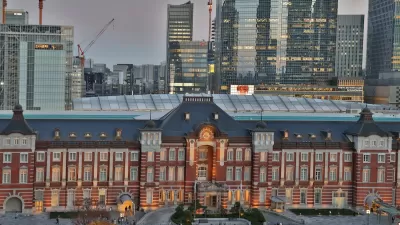The Grid solicited ideas from some of Toronto's smartest people for how to make the city better, no matter what the cost or feasibility. David Topping and Katie Underwood deliver the inventive results.
Below are a few of our favorites:
From Richard Florida, director, the Martin Prosperity Institute:
"Let's do New York City's High Line
one better. Toronto should start turning some of its streets into
linear parks so that we can have an entire system of green spaces
cutting through the city. We could fill these parks with grass and trees
and benches and chairs, and have separate paths for pedestrians and
cyclists."
From Jim Chan, manager, Toronto Public Health Food Safety Program:
"Toronto has miles of hidden alleyways and laneways waiting to be
reclaimed and transformed into lively public spaces. Here, when people
think of laneways, they think, 'Oh no, they're dirty, there are drug
dealers there.' But all you'd have to do is clean them up. We could hold
weekly markets with vendors and even food stands. We could hold
concerts, or film screenings, and would be perfect for pop-up
restaurants. In Toronto, there's almost no more land that you can
actually develop. Why can't we re-use underused space instead?"
From Paddy Harrington, executive creative director, Bruce Mau Design:
"Toronto needs a mountain. Where Vancouver and Montreal can gaze off
into the distance from lofty peaks, we have to settle for the CN Tower.
But how to build one?
Toronto produces close to 400,000 tons of residential garbage every year. By comparison, 450,000 tons of rock were blasted off of Mount Rushmore to create its presidential contours.
So what if we diverted all that garbage over a few years to the Billy
Bishop airport and built a mega-mountain for skiing, hiking, mountain
biking, and all the other great activities only made possible by a true
point of elevated land?...What better way to boost our own environmental profile
than to divert all that waste from those who don't want it and turn it
into something amazing?"
FULL STORY: Toronto the Better

Alabama: Trump Terminates Settlements for Black Communities Harmed By Raw Sewage
Trump deemed the landmark civil rights agreement “illegal DEI and environmental justice policy.”

Planetizen Federal Action Tracker
A weekly monitor of how Trump’s orders and actions are impacting planners and planning in America.

The 120 Year Old Tiny Home Villages That Sheltered San Francisco’s Earthquake Refugees
More than a century ago, San Francisco mobilized to house thousands of residents displaced by the 1906 earthquake. Could their strategy offer a model for the present?

Indy Neighborhood Group Builds Temporary Multi-Use Path
Community members, aided in part by funding from the city, repurposed a vehicle lane to create a protected bike and pedestrian path for the summer season.

Congestion Pricing Drops Holland Tunnel Delays by 65 Percent
New York City’s contentious tolling program has yielded improved traffic and roughly $100 million in revenue for the MTA.

In Both Crashes and Crime, Public Transportation is Far Safer than Driving
Contrary to popular assumptions, public transportation has far lower crash and crime rates than automobile travel. For safer communities, improve and encourage transit travel.
Urban Design for Planners 1: Software Tools
This six-course series explores essential urban design concepts using open source software and equips planners with the tools they need to participate fully in the urban design process.
Planning for Universal Design
Learn the tools for implementing Universal Design in planning regulations.
Clanton & Associates, Inc.
Jessamine County Fiscal Court
Institute for Housing and Urban Development Studies (IHS)
City of Grandview
Harvard GSD Executive Education
Toledo-Lucas County Plan Commissions
Salt Lake City
NYU Wagner Graduate School of Public Service





























